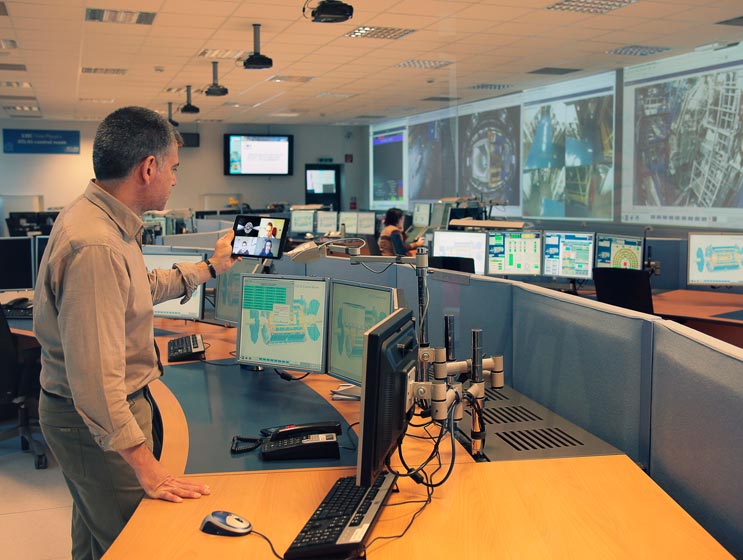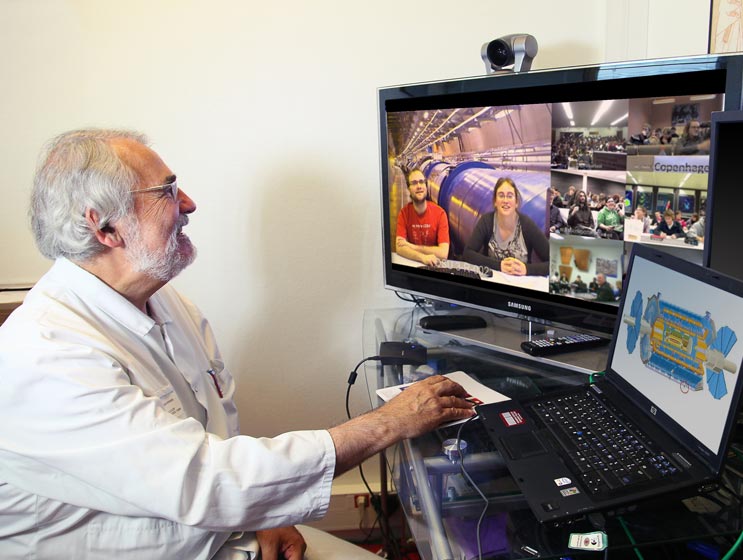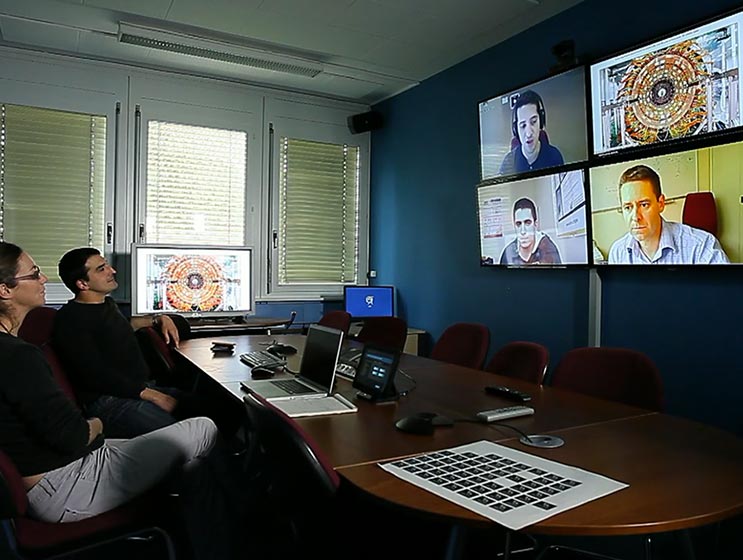
Vidyo Helps CERN Connect 20,000 Scientists to Collaborate Globally on Research that Explores the Mysteries of the Universe
CERN, the European Organization for Nuclear Research, is one of the world’s largest and most respected centers for scientific research. Its business is fundamental particle physics. By accelerating sub-atomic particles to super-high speeds, then making the particles collide with each other or with stationary targets, CERN researchers learn about the laws of nature and attempt to answer some of the deepest scientific questions about the universe. In addition to its world-class capabilities for physics analysis, CERN advances the frontiers of technology in areas such as software analysis and computing. In fact, it is the place where the World Wide Web was invented by Tim Berners-Lee in 1989, while he was a scientist at CERN.
Results
Scientists
Institutes
Concurrent Users
“At the levels of Big Science at which CERN is engaged, the quality, reliability, and scalability of our video conferencing technology cannot be underestimated – and Vidyo meets the challenge.”
Finding out what the universe is made of and how it works requires an enormous amount of collaboration. A community of 20,000 scientists from over 600 institutes collaborate with CERN and working together closely and communication in such context is essential. Since 1996, video conferencing has played an essential role in CERN’s operations. Most recently, the organization has deployed high-definition Vidyo® technology to enhance the user experience of its thousands of monthly videoconferencing meetings (hundreds of large meetings) and to meet its daunting requirements for scalability, reliability, and end-point flexibility. Today, scientists around the world use Vidyo’s products to collaborate on Large Hadron Collider (LHC) experiments, whose research includes the study of the Higgs boson.“It’s not practical for CERN’s worldwide community of researchers — representing 113 nationalities and more than 600 universities — to gather in person all the time to discuss their research, yet face-to-face real-time meetings are crucial to the success of CERN’s research mission,” said Frédéric Hemmer, Head of IT at CERN. “As a result, we depend on video conferencing. The scale and frequency of our meetings, and the range of devices and technologies that need to be supported, make CERN an extremely demanding video conferencing environment. We found that Vidyo matched the quality, endpoint flexibility, and scalability we need in an affordable package.”
“Vidyo is commercially available and well supported, making it cost-effective and easy to maintain. Vidyo works well with our legacy systems as well as on Windows, Mac OS, Linux, iOS, and Android operating systems via desktop and laptop computers, tablets, smartphones, room systems, and immersive telepresence systems,”
– Tim Smith, Collaboration and Information Services Group Leader in CERN’s IT department.
“We interact with people from a wide variety of universities and institutions around the world,” said Steven Goldfarb, Outreach and Education coordinator with the ATLAS Experiment at CERN.
“That means that we use every possible instrument you can imagine to connect to our video conferences. We’re extremely heterogeneous. We use a variety of operating systems – and every endpoint from high-quality H.323 systems for connecting in the conference rooms to phones, when necessary. People connect using their personal mobile devices. Vidyo handles all of this seamlessly. We just build an agenda for the meeting and we turn on Vidyo. It’s that simple.
”CERN has never operated as an isolated laboratory, but rather it has been a collaborative community since its founding in 1954. Scientists in the research community might visit the CERN site occasionally, but they usually are based at universities and national laboratories in their home countries. As a result, consistent contact and reliable communications are essential for CERN’s researchers. On any given day, thousands of CERN-related video connections may occur over Vidyo. With peaks of up to 750 concurrent users, traffic is spread over 20 servers worldwide. The infrastructure is also being used by more than 300 H.323 room systems either at CERN or in partner institutes.
Using Vidyo, CERN physicists are able to meet as often as they need to present and discuss their research results. The ATLAS experiment is one of several particle physics experiments on CERN’s Large Hadron Collider. The purpose of the experiment is to try to understand the basic building blocks of the universe and by which forces these building blocks interact.
According to Goldfarb, “To run an experiment like ATLAS a very large international collaborative effort is needed. We have 38 different countries,with 177 institutions from those countries spread around the world. All of these institutions contribute significantly and actively to the experiment. We have to remain connected all of the time. It’s the only way to make decisions and contribute to those decisions as a collaboration. So we essentially use Vidyo conferencing for all of our meetings.”
Just as CERN researchers push particle collision energies and computer processing to new limits, they also push the state-of-the-art for any kind of communications technology they plan to use, including the visual communications of video conferencing. “The relationship with Vidyo has been good from the beginning because we believe that Vidyo really understands how unique our needs are. They have been accommodating to our requests and feedback with open-mindedness and flexibility,” said Hemmer. “At the levels of Big Science at which CERN is engaged, the quality, reliability, and scalability of our video conferencing technology cannot be underestimated – and Vidyo meets the challenge.”



Get In Touch With Sales
Learn more about how Vidyo can provide the solution you need.
